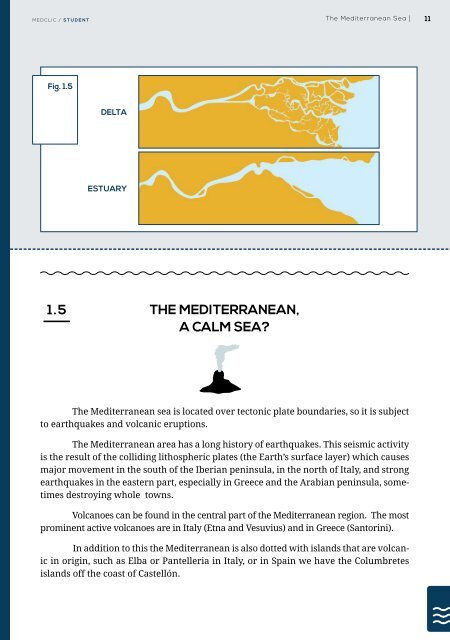u1_web_the_mediterranean_sea
Create successful ePaper yourself
Turn your PDF publications into a flip-book with our unique Google optimized e-Paper software.
MEDCLIC / STUDENT The Mediterranean Sea | 11<br />
Fig. 1.5<br />
DELTA<br />
ESTUARY<br />
1.5<br />
The Mediterranean,<br />
a calm <strong>sea</strong>?<br />
The Mediterranean <strong>sea</strong> is located over tectonic plate boundaries, so it is subject<br />
to earthquakes and volcanic eruptions.<br />
The Mediterranean area has a long history of earthquakes. This seismic activity<br />
is <strong>the</strong> result of <strong>the</strong> colliding lithospheric plates (<strong>the</strong> Earth’s surface layer) which causes<br />
major movement in <strong>the</strong> south of <strong>the</strong> Iberian peninsula, in <strong>the</strong> north of Italy, and strong<br />
earthquakes in <strong>the</strong> eastern part, especially in Greece and <strong>the</strong> Arabian peninsula, sometimes<br />
destroying whole towns.<br />
Volcanoes can be found in <strong>the</strong> central part of <strong>the</strong> Mediterranean region. The most<br />
prominent active volcanoes are in Italy (Etna and Vesuvius) and in Greece (Santorini).<br />
In addition to this <strong>the</strong> Mediterranean is also dotted with islands that are volcanic<br />
in origin, such as Elba or Pantelleria in Italy, or in Spain we have <strong>the</strong> Columbretes<br />
islands off <strong>the</strong> coast of Castellón.




